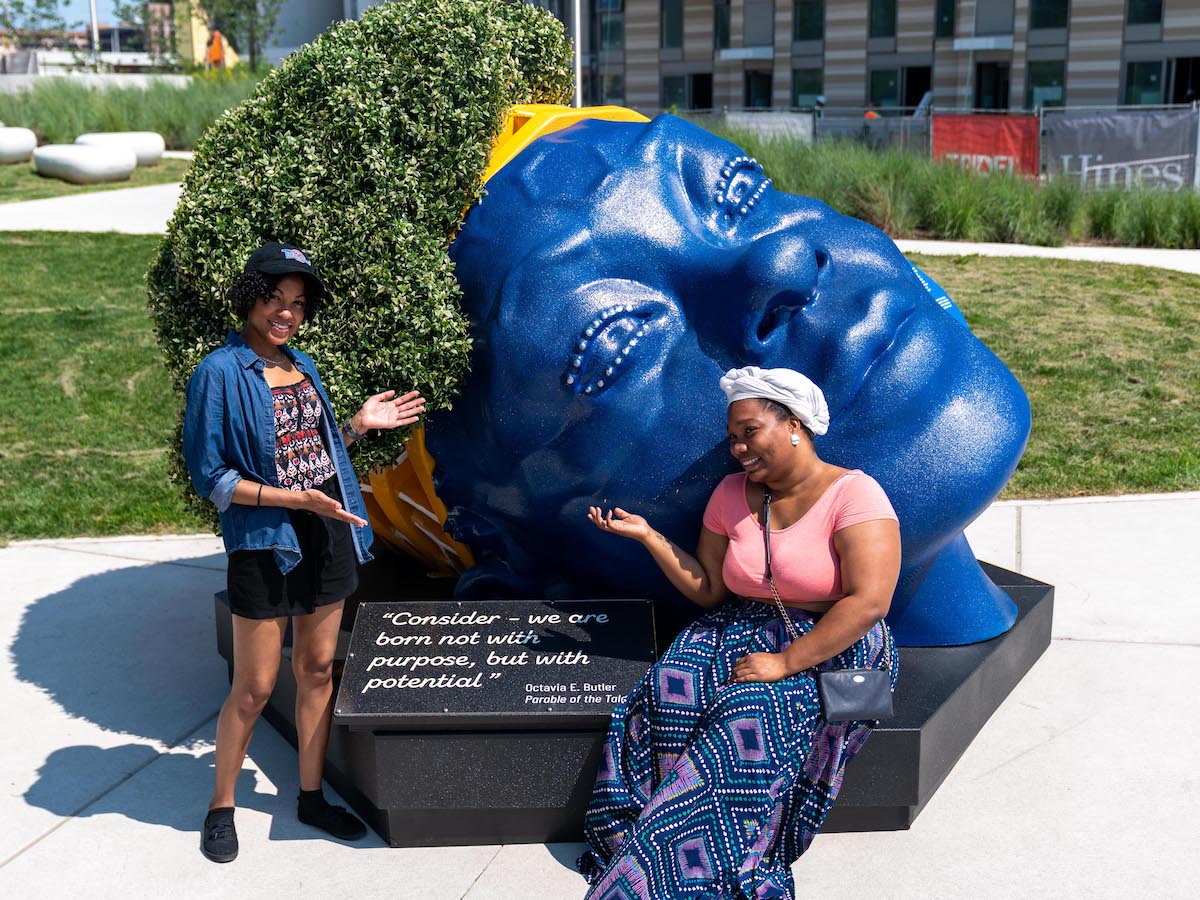We learned there is a lesson in every failure
When the Black Speculative Arts Movement (BSAM) Canada Institute (external link) first became involved with the Design Fabrication Zone, it was around the time that we were selected as the inaugural Artists-in-Residence for the Toronto Waterfront Public Art Residency (external link) . We came to the Zone with an armful of conceptual musings bundled in a gunny sack. We didn’t know it at the time, but eventually these musings would manifest as the most significant project that we have worked on during our time as members.
Our artist residency resulted in what we refer to as Earthseeds: Space of the Living (external link) , a project inspired by the Parable series by African American science fiction writer, Octavia E. Butler. Olamina (external link) , our 6-foot public art sculpture of a water deity that was first revealed at Aitken Place Park back in August 2021, is a part of the Earthseeds Project. She is also the public art project that was our central focus, and the community of creators that we interacted with at the Design Fabrication Zone were able to get an inside understanding of some of our challenges and successes while creating her. Funnily enough, she started as an idea for a multimedia living wall.
At the time, we were thinking about making a structure that could act as a pseudo community garden.

Photo by Celene Tang.
You see, in Parable of the Talents, the settlers of a community called Acorn use a living wall of cacti and thorn bushes to protect themselves from outside intruders. Our idea for the living wall was meant to build from this idea of protection, but instead of protection from bodily harm, it was about protecting your energy and your mental wellness in a time of rising instability, panic, and civil unrest. The main focus was on developing a structure for what we now refer to as the Plant Exchange: an activity where we invite participants to speak or write affirmations expressing hopes and desires to a plant that is then added to Olamina’s headwrap. The original structure was meant to reveal itself as a sculptural representation of restorative growth the more plants were added to it.
As we began to have deeper discussions from knowledgeable fabricators that were part of the Zone Learning experience, and the COVID-19 pandemic restrictions began to tighten, we realized that our initial idea would need to change. It was through the conversations we had about fabrication processes and hearing stories from other creators who also had to constantly shift their plans to keep up with the changing Toronto public art landscape that we were able to finalize our design, resulting in the production of an iridescent blue water goddess inspired by African and Caribbean folktales.
The original structure was meant to reveal itself as a sculptural representation of restorative growth the more plants were added to it.
Throughout the production of Olamina (and our residency at large) we’ve had many instances of having to go back to the drawing board. One valuable lesson we’ve learned is that there is a lesson in every failure, and you should always leave space for things to shift or be visualized in an alternate way. That’s all part of the process and adds a considerable amount of worth to the thing that becomes your final output.
As Octavia E. Butler so poetically put it, “The only lasting truth is Change.”